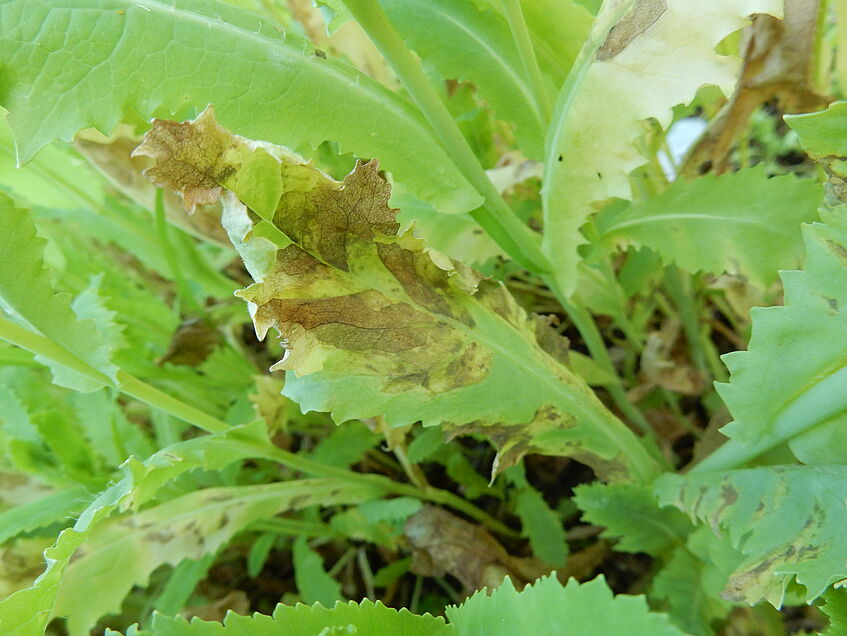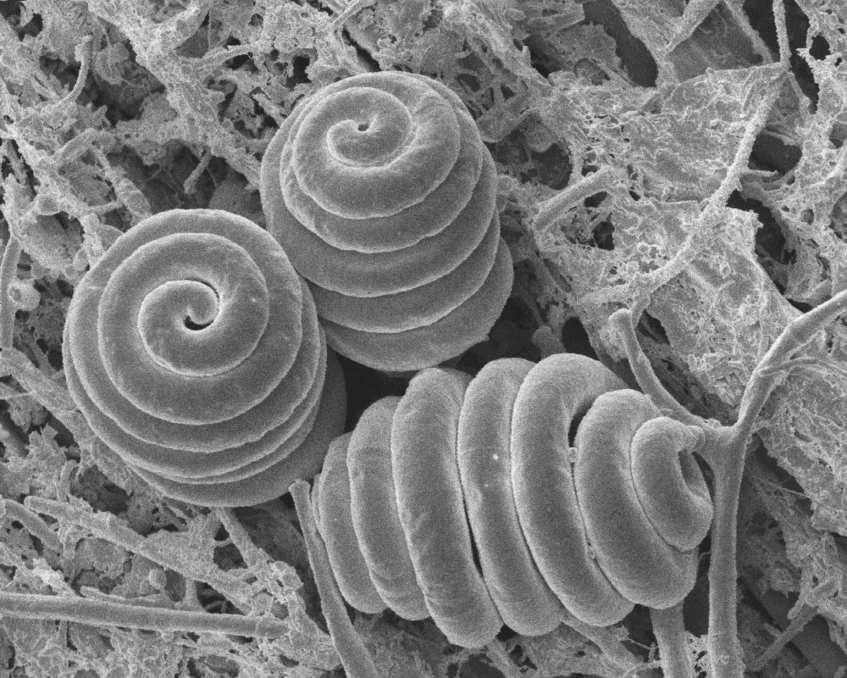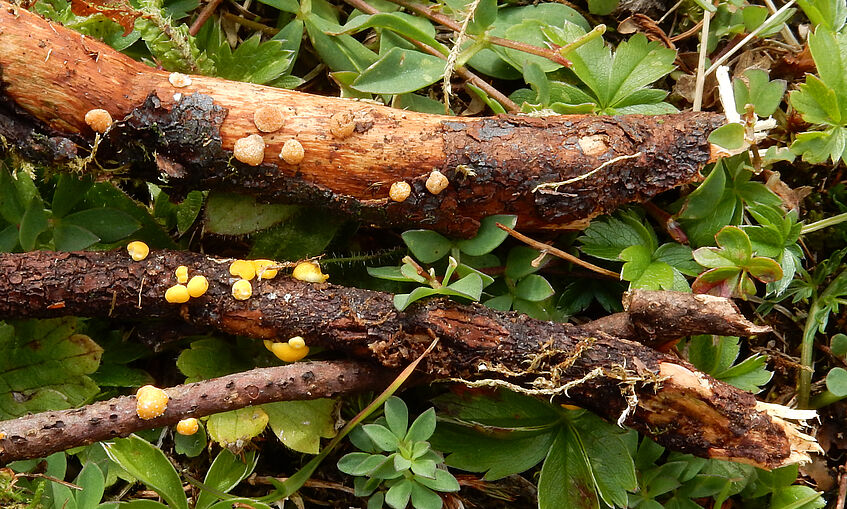Phylogeny and speciation of downy mildews (Peronosporales, Oomycetes)
The Peronosporales (downy mildews) contain economically important obligate plant pathogens, e.g. downy mildews of grape (Plasmopara viticola), sunflowers (Plasmopara halstedii s. l.), cucurbits and cucumbers (Pseudoperonospora cubensis), lattice (Bremia lactucae) and blue mold of tobacco (Peronospora tabacina). However, until recently, no sound hypotheses on phylogenetic relationships within the Peronosporales have been available. In collaboration with the University of Tübingen (research group of Prof. Oberwinkler), both species concepts and phylogenetic relationships of the genera of Peronosporales are investigated, using both molecular techniques and morphological investigations. Additional aspects investigated are overall biodiversity of the group and the processes involved in speciation of downy mildews like host specificity, frequency of host jumps and species delimitation and the development of molecular identification tools.

Peronospora somniferi
Systematics, phylogeny and ecology of aeroaquatic fungi
The aeroaquatic fungi are a unique ecological assemblage, which inhabit mostly stagnant water bodies (ponds, ditches, etc.). They grow on submerged litter, being adapted to low oxygen concentrations; however, their dispersal units (spores, fruitbodies) are only produced above the water level. Dispersal takes place at the water surface, and the dispersal units show remarkable morphological structures to enclose air to be well buoyant. During extensive investigations, several new species and genera could be described. In addition, a culture collection containing isolates from Europe, North America and New Zealand is maintained, which is a core resource for molecular phylogenetic investigations. For overall view of biodiversity, see a IMC7 poster. Currently, molecular phylogenetic investigations are performed on almost all species described to reveal the evolutionary history of the aeroaquatic lifestyle.

Helicoon sessile
Biodiversity of Hypocrea in Europe
The largest part of the phylum Ascomycota (sac fungi) is characterized by life cycles, which exhibit a sexual (teleomorph) and an asexual form (anamorph). Within the pyrenocarpous ascomycetes the order Hypocreales contains an exceedingly high number of species important economically and ecologically, as pathogens of important crops (potato, tomato, bean, peanut, cacao, apple and pear trees), as pests of commercial mushroom cultivation, as sources of pharmaceuticals and mycotoxins, as biological control agents of plant pathogenic fungi, as sources of industrial enzymes, and even as a source of food. Of particular importance is the genus Trichoderma, the main component of soil fungi. Accordingly, most of the studies in this genus have been carried out using material isolated from soils. Teleomorphs of Trichoderma belong to the genus Hypocrea and inhabit wood, bark, other dead plant material and fungi (mainly basidiomycetes like polypores) as saprobes. Species of Hypocrea exhibit an exceedingly low variation in morphology, which makes identifications relying exclusively on morphological examinations impossible, resulting in misdeterminations. For this reason, many descriptions of species of Hypocrea, particularly in popular illustrative publications, are at most approximations to species complexes. Certainty in identification can only be provided by a combination of the morphology of the teleomorph (Hypocrea), culture characteristics, the morphology of the anamorph (Trichoderma) and the phylogenetic analysis of sequences of certain genes. Currently it is largely unknown, how many and which species of Hypocrea are represented in Europe.
As a consequence, this project is designed to answer the following questions:
(1) to assess the biodiversity of Hypocrea in Europe, after collecting fresh teleomorphic material,
(2) to detect and describe new species of Hypocrea,
(3) to identify currently unknown connections between Hypocrea teleomorphs and Trichoderma anamorphs and
(4) to analyse ecologic data for Central European species of this genus.
This project is funded by the Austrian Science Fund (FWF) and realised in tight collaboration with the TU Vienna.

Trichoderma rhododendri (above) and T. psychrophila (below). Foto: I. Krisai-Greilhuber
